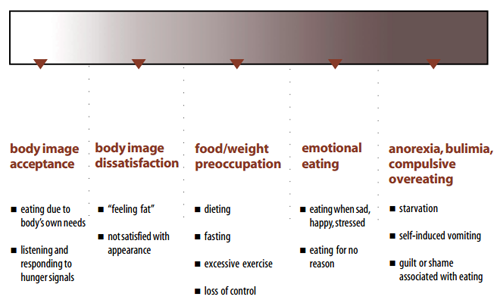Eating disorders and disordered eating share very common symptoms but are not the same. Some common symptoms include:
- A preoccupation with weight and/or body shape
- Yo-yo dieting
- Overexercising
- Fasting and/or restricting
- Compulsive overeating
- Purging and/or laxative use
While there may be some commonalities, disordered eating is made up of a range of thoughts, feelings, and actions that revolve around food and body image. On one end of the spectrum, you have healthy and maintainable eating habits and body acceptance. On the other end of the spectrum, you have body dissatisfaction and unhealthy eating habits that result in eating disorders such as anorexia, bulimia, and binge eating disorder. Disordered eating lies somewhere in between, where the actions and symptoms are not so severe or happen frequently enough that it would be classified as a clinical eating disorder. Disordered eating symptoms can come and go, pop up after stressful life events, or happen so infrequently that they don’t interfere with an individual’s daily routine right away, but they are still at risk of having these symptoms develop into a full-blown eating disorder.




